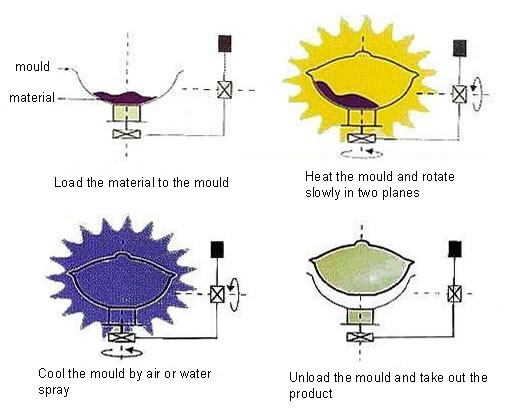Introduction of Rotomolding
Rotational molding technology is expanding the capabilities of polymer product manufacturers by enabling them to create light-weight, seamless, stress-free parts of virtually any size in the most complex shapes. Rotationally molded products represent a wide range of materials, performance characteristics, colors, surface textures and finishes. The products can be custom-designed to meet precise market requirements more economically than by conventional injection or blow molding.Detailed Benefits of rotomolding:
1. For the same product size, rotomolding's mold only cost 1/3-1/4 of injection mold or blow mold.2. Strong edge and corner: Rotomold's edge can be thicker than 5 mm. This solves the problem that many hollow products have weak edges/ corners.
3. Complex shape is achievable;
4. Molded product can be completely closedŁ»
5. Easy to apply various inserts. For example, can be filled with foamed PU as insulation.
6. Different wall thickness can be achieved without adjusting mold (2mm and above) .
7. Hollow but strong and seamless. Wall thickness can be more than 5mm.
Rotational molding is a Four-stage, no-pressure, plastic molding process.
1. First, the required amount of plastic material is poured into the mould which is then closed.2. During the heating stage, the mold slowly rotates in two planes (bi-axial rotation). Heat transfer causes the plastic charge inside the mold to melt and uniformly coat the interior of the mold.
3. During the second stage, the mold moves to the cooling station, where it is cooled by air and/or water spray.
4. In the final load/unload stage, the part is removed from the mold and a new charge of material is loaded into the mold
